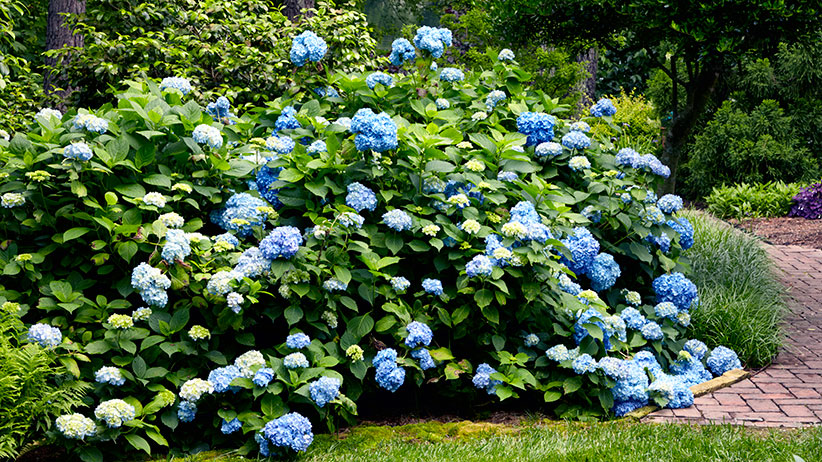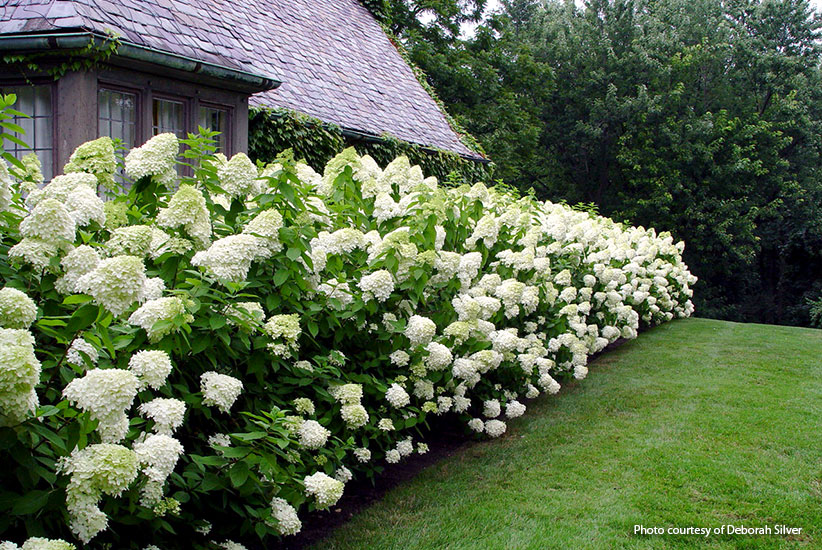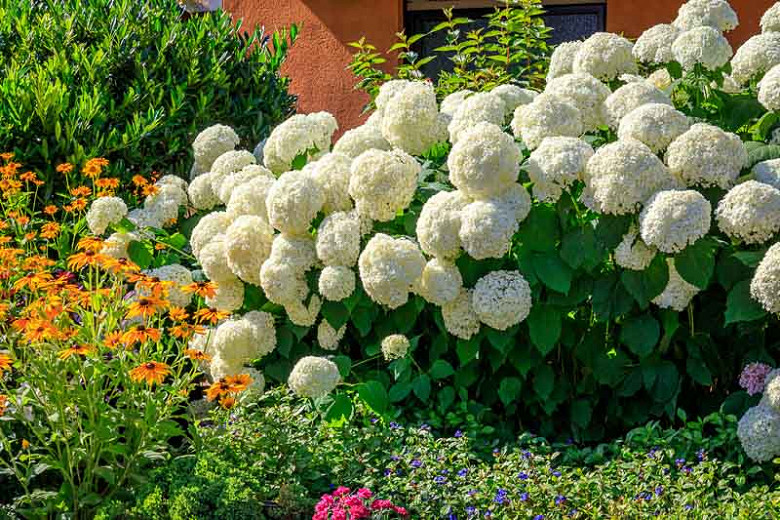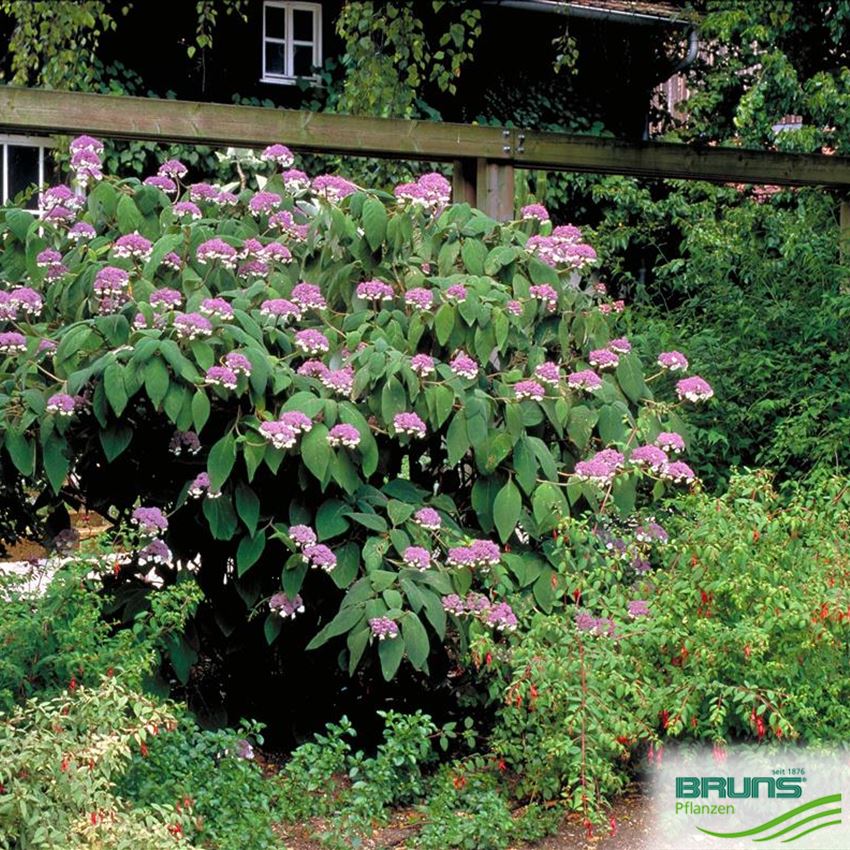The Hydrangea That's
The Hydrangea That's
Hydrangeas are some of the most popular flowering shrubs in the world, and for good reason. They come in a wide variety of colors, sizes, and shapes, and they can be grown in a variety of climates. But with so many different types of hydrangeas available, it can be tough to know which one is right for you.
In this blog post, we'll take a look at the different types of hydrangeas, their care requirements, and their symbolism. We'll also discuss some of the latest trends in hydrangea gardening.
Types of Hydrangeas
There are four main types of hydrangeas: bigleaf hydrangeas, panicle hydrangeas, smooth hydrangeas, and climbing hydrangeas.
- Bigleaf hydrangeas (Hydrangea macrophylla) are the most popular type of hydrangea. They have large, showy flowers that can be blue, pink, or white. Bigleaf hydrangeas are hardy in USDA zones 5-9.

- Panicle hydrangeas (Hydrangea paniculata) are known for their large, conical flowers. They can be white, pink, or blue. Panicle hydrangeas are hardy in USDA zones 3-8.

- Smooth hydrangeas (Hydrangea arborescens) are smaller than bigleaf hydrangeas, but they have just as beautiful flowers. They can be white, pink, or blue. Smooth hydrangeas are hardy in USDA zones 3-8.

- Climbing hydrangeas (Hydrangea petiolaris) are a type of vine that can climb up to 30 feet. They have small, white flowers that bloom in the summer. Climbing hydrangeas are hardy in USDA zones 4-8.

Care Requirements
Hydrangeas are relatively easy to care for, but they do have some specific requirements. They need full sun to partial shade, and they prefer moist, well-drained soil. Hydrangeas should be fertilized once a year in the spring.
Symbolism
Hydrangeas have a long history of symbolism. In Japan, they are associated with gratitude, understanding, and apology. In Western cultures, hydrangeas are often seen as symbols of love, happiness, and good luck.
Latest Trends in Hydrangea Gardening
There are a few trends in hydrangea gardening that are gaining popularity. One trend is the use of hydrangeas in containers. Hydrangeas can be grown in containers indoors or outdoors, and they make a beautiful addition to any patio or deck.
Another trend is the use of hydrangeas in mixed borders. Hydrangeas can be combined with a variety of other plants to create stunning displays. Some popular companion plants for hydrangeas include roses, lilies, and peonies.
Conclusion
Hydrangeas are beautiful, versatile plants that can add a touch of elegance to any garden. With so many different types and colors to choose from, there's sure to be a hydrangea that's perfect for you.
Hydrangea aspera macrophylla, also known as the "fleeceflower hortensia," is a beautiful and versatile plant that can add a touch of elegance to any garden. This hardy shrub is native to East Asia and can grow up to 2 meters tall. It has large, hairy leaves and large, flat flower heads that bloom in shades of blue, purple, or pink. Hydrangea aspera macrophylla prefers partial shade and well-drained soil. It is relatively easy to care for and can be propagated by cuttings or division.
If you are looking for a beautiful and easy-care shrub for your garden, hydrangea aspera macrophylla is a great option. To learn more about this plant, I recommend visiting . This website has a wealth of information on hydrangea aspera macrophylla, including its history, care requirements, and varieties.
FAQ of hydrangea aspera macrophylla
Q: What is Hydrangea aspera macrophylla?
A: Hydrangea aspera macrophylla is a large, deciduous shrub that is native to China. It is known for its large, showy flowers that bloom in the summer. The flowers can be blue, pink, or white, depending on the acidity of the soil.
Q: What are the best growing conditions for Hydrangea aspera macrophylla?
A: Hydrangea aspera macrophylla prefers moist, well-drained soil in full sun to partial shade. It is hardy in USDA zones 4-9.
Q: How do I care for Hydrangea aspera macrophylla?
A: Hydrangea aspera macrophylla is a relatively easy plant to care for. Water it regularly, especially during the summer months. Fertilize it in the spring with a balanced fertilizer. Prune it in the early spring to remove dead or diseased wood.
Q: How do I get my Hydrangea aspera macrophylla to bloom blue?
A: The color of Hydrangea aspera macrophylla flowers is affected by the acidity of the soil. If you want your flowers to be blue, you will need to make the soil more acidic. You can do this by adding peat moss or sulfur to the soil.
Q: What are some common problems with Hydrangea aspera macrophylla?
A: Some common problems with Hydrangea aspera macrophylla include:
- Leaf spot
- Powdery mildew
- aphids
- scale
To prevent these problems, you should water your plant regularly, fertilize it in the spring, and prune it in the early spring. You should also inspect your plant regularly for pests and diseases.
Image of hydrangea aspera macrophylla
5 different images of "hydrangea aspera macrophylla" from Pinterest:
- Hydrangea aspera macrophylla in full bloom. This image shows a large, lush hydrangea bush covered in beautiful blue flowers. The flowers are large and round, with a ruffled edge.
- Hydrangea aspera macrophylla in a garden setting. This image shows a hydrangea bush planted in a garden. The bush is surrounded by other flowers and greenery, and the flowers are a beautiful shade of blue.

- Close-up of hydrangea aspera macrophylla flowers. This image shows a close-up of the flowers of a hydrangea aspera macrophylla bush. The flowers are a beautiful shade of blue, and they have a ruffled edge.

- Hydrangea aspera macrophylla leaves. This image shows the leaves of a hydrangea aspera macrophylla bush. The leaves are a dark green color, and they are large and oval-shaped.

- Hydrangea aspera macrophylla in a vase. This image shows a hydrangea aspera macrophylla bush in a vase. The flowers are a beautiful shade of blue, and they are arranged in a cascading pattern.


Post a Comment for "The Hydrangea That's"